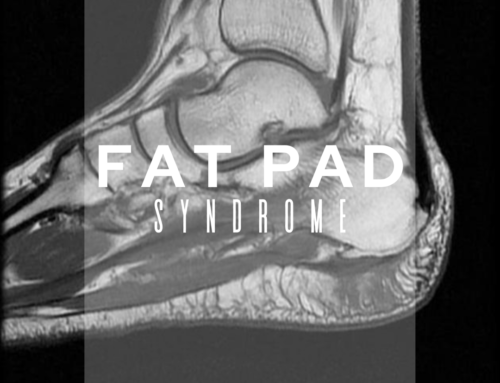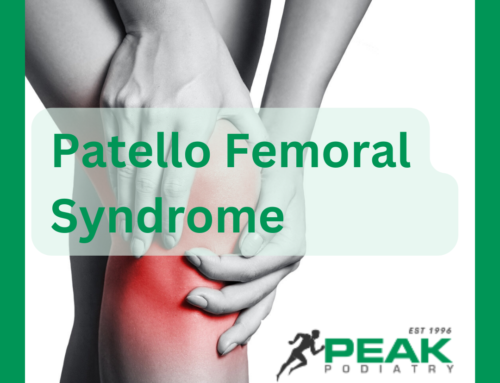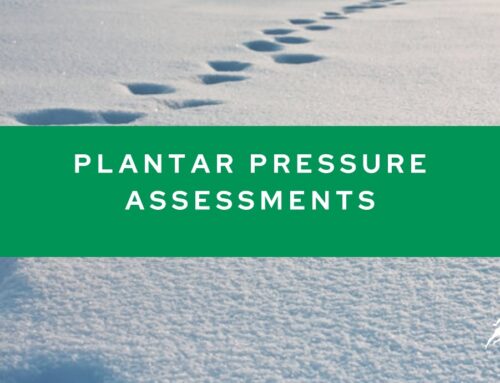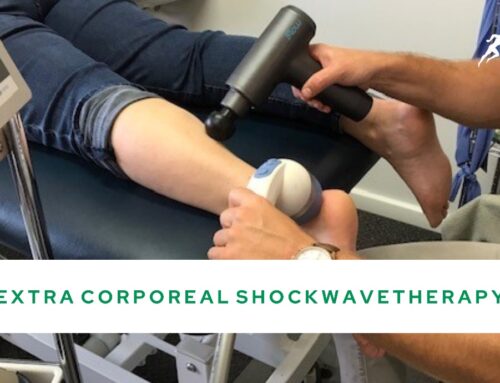Welcome to the first newsletter of “Peak Pages” which will be regular update on the latest and greatest in the world of Peak Podiatry, biomechanics and sports podiatry.
We have launched our new look website which we hope you’ll enjoy. If you haven’t visited us lately we welcome you to browse our site.
We’re also excited to join the world of social media and facebook. Please click here to check out our facebook page and “like” us.
The past 12 months has again been a busy time for us, not only being an Olympic year, but also plenty of active, injured, and sore athletes, kids, mums and dads.
Peak has four full time podiatrists; Darryn Sargant, Danica Snashall, Sarah Bissett and Juliet Mollica assisting these patients with their concerns.
This issue:
Injury of the Month
A new take on Plantarfasciitis
Athlete Profile

 Injury of the month.
Injury of the month.
A “snap” shot of the commitment and dangerous nature of “Roller Derby”.
Not for the faint hearted. A complete fracture of the Tibia and Fibula.
The following was taken from a presentation by Mr Simon Bartold (FACMS) at the Perth AAPSM Roadshow July 2012.
Plantarfasciitis – some truths and new ideas. Did you know?
- It is often assumed the medial band is the most frequently implicated. It has been actually been shown to be thin and virtually non existent. (Sarrafian,1983)
- The central aponeurotic band is cited as the major structural and functional component. (Wearing, 2006)
Histological Anatomy
- Similar to tendon and ligament.
- Strength is very similar to the ACL.
- Comprised of elongated fibrocytes embedded in the extracellular matrix consisting primarily of crimped collagen fibres.
- Fibrocytes produce collagen, and form a 3D communicating network (Benjamin and Ralphs, 2000)
- This may be capable of sensing and responding to changes in load.
- So, in addition to passively transmitting force, the plantar fascia may act as an active sensory structure capable of adapting its composition in response to external demands.
- This being the case, the plantar fascia may then in fact have significant sensory capacity.
- Bending, shear and compression are now considered probably more important than tensile load, and as such the idea that we are supporting the arch to prevent collapse and therefore decreasing tensile load may well be incorrect.
- This is of relevance and will influence the approach we take to Plantarfasciopathy in relation to footwear and orthotic therapy with perhaps greater consideration to cushioning the plantar heel and supporting the fat pad.
Foot mechanics
- Neither abnormal shape nor movement of the arch are associated with chronic plantar fasciitis.
- However, arch mechanics may influence the severity of plantar fasciitis, once the condition is present.
- Fascial thickness correlated with arch shape (Wearing,S.C. Med Sci Sports Exerc. 2004 Oct;36(10))
Athlete Profile
Scott Hawker – Ultra marathoner

My name is Scott Hawker and I am a Kiwi Ultra runner. I began running Ultras in 2011 after moving to Perth from Christchurch, New Zealand. In 2011 I tore cartilage in my knee, however I ended up racing all that year albeit with a dodgy and sore knee. Since surgery in January this year I have started to train and race more consistently. This year I have done the Bunbury 50km, Hoka One One Kep Ultra 75km, Geraldton Marathon, Glasshouse Mountains 100km and the Esperance Half Marathon. I have managed to take first place in all my races so far which has been absolutely fantastic. I think a big part of my quick recovery after races and great results for the year to date is thanks to the Hoka One One running shoes I do all of my running in. My next race is the Great North Walk 100km which runs between Newcastle and Sydney, I can’t wait for the challenge ahead.
Most memorable run? Glasshouse 100km, having my wife and some of my family there for my 1st 100km race was amazing. The support they gave me was truly awesome.
Editors note: Scotts winning time was 9hr4mins which broke the old course record by a touch under 10 minutes!
Favourite trail in Perth? Lesmurdie Falls National Park, so close but you feel like you are in the middle of nowhere!
Favourite distance? Probably the 100km, until I step up to the 100 miler 🙂
Toughest race/ run? Easily the first trail Ultra I did – The Hoka One One Kep Ultra in 2011 was a complete eye opener. I hit a lot of low points in that race and learnt a lot about myself and my body.
Favourite pre race food? Steak, chips and salad, always 2 days before race day.
Any pre race habits? Missing out on heaps of sleep, especially in bigger races. I tend to play the race over in my sleep night after night.
Any running idols? A friend of mine Marty Lukes – (NZ 100km Champ). I have looked up to Marty since I was a teenager. Also Anton Krupicka, his approach to running and especially life in the mountains is inspiring.
Most inspiring person? My Uncle, Shane Thrower. After being knocked off his bike while training in 2003 he suffered severe injuries, including a traumatic brain injury, paralysis and broken bones. Medical staff told him that he would never complete his study, play competitive sport or work again, but he continues to prove medical professionals wrong and is currently competing in races all over the world. He provides me with his words of wisdom and wealth of knowledge which is invaluable to me.
What’s new in running footwear
Over the last twelve months I have seen a number of ultra marathoners move into the shoes below, Hoka one one. Whilst the running shoe debate over minimalistic and “barefoot” running continues, the complete opposite end of the spectrum is being developed. These will make you at least another 2 inches taller!
As Scott mentioned, he won a pair of these in a race, and whilst reluctant to use, has never looked back since. Watch this space…

Hoka one one info:
- 2.5 x more midsole than most running shoes
- Allows for up to 20mm compression at the heel
- 40mm high sole design
- 50%increase in surface area of the outsole compared to traditional running shoes.







Leave A Comment